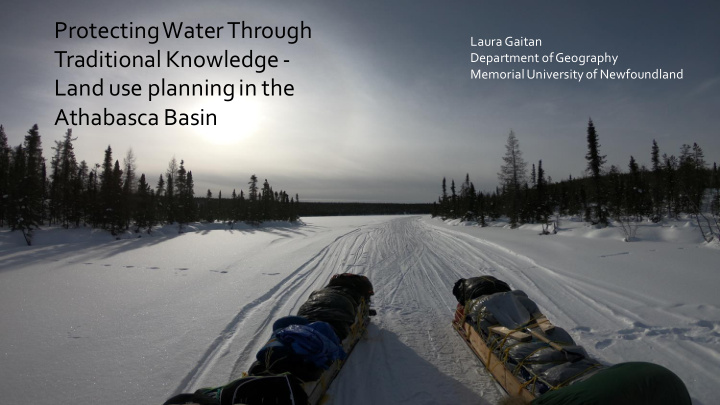



Protecting Water Through Laura Gaitan Traditional Knowledge - Department of Geography Memorial University of Newfoundland Land use planning in the Athabasca Basin
Saskatchewan Provincial Base Map Native Lands Reserves
Collect traditional land use & occupancy information from Elder interviews in order to: 1. Identify landscapes of cultural importance to the DenesulineCommunities; 2. Understand changes in the water quality, quantity and flow of the Basin. The knowledge gathered will be included in the future Athabasca Land Use Plan; and specifically used to help identify core areas in need of protection and conservation. Ice fishing; culture camp; NWT; 2018
The interviews followed a semi-structured format using a standardized interview guide designed to provide a consistent, but flexible, framework for soliciting and recording responses. Map data was captured and managed using a direct-to-digital process involving mapping on-screen, with Google Earth imagery as a digital base and geo-referenced at a 1:50,000 scale or better. Community training session, Fond Interview, Black Lake FN. Interview, Hatchet Lake FN. du Lac FN. Methods were developed with the help of Firelight Group
"When [we] start thinking about the water [we] take it for granted; we probably got one cleanest water [sources] in the world, and it's not going to be like that forever, not necessarily." "I know some people don’t drink water from the lake here. Me? I don’t care. If I want to drink I just take it. Yeah, it is. Since I was a kid we get water from there.”
THANK YOU
Recommend
More recommend